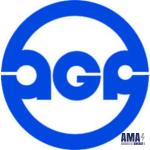Airgamma Spectrometric survey
Maps of the contents of uranium, thorium and potassium, as well as their various transformations (functions of the contents) allow us to solve the following problems:
- identify elements of the geological structure of the studied territory;
- searches for deposits of radioactive raw materials;
- the study of the nature and intensity of manifestations of superimposed processes (metasomatism) and the search for hydrothermal deposits;
- study of oil and gas prospective territories;
- remote environmental and engineering monitoring.
For the AGS survey, modern digital 1024-channel RSX-4 spectrometers (RSX-5) with polystyrene NaJ (Tl) detectors with a total capacity of up to 48 l (usually 32 l) are used. The energy resolution of the spectrometer along the 0.662 MeV line is no worse than 9%.
The registration range of the gamma-ray spectrum is 0.38 - 5.0 MeV. Registration frequency - 1 sec. The stabilization of the energy scale of the spectrometer is carried out by photopic of natural radioactive elements (potassium or thorium). The spectrometer registers and processes the data of the detectors crystal-clear. In addition, the used detectors have relatively high photoefficiency, and the registration unit has increased fault tolerance and self-diagnosis.
Depending on the tasks at hand, helicopters (such as Mi-8, Eurocopter AS350 B3) or aircraft (AN-2, AN-3, AN-26, Cessna 208B, etc.) can be used as carriers.
In addition to constant work aimed at solving geological problems, the enterprise was the lead organization for conducting airborne gamma-ray spectrometric surveys to assess the radiation pollution of the territories affected by accidents at nuclear enterprises and industry. Over the past years, the company has implemented a state program for radiation mapping of territories affected by the Chernobyl accident, at the Mayak Production Association in the Chelyabinsk Region, and tests at Novaya Zemlya and Semipalatinsk test sites. The volume of such studies is more than 4 million square meters. km
The methodology for filming and processing AGS data is consistent with the IAEA recommendations (IAEA, 2003). Standard processing is carried out on four energy windows:
| Channel | Energy window (MeV) |
|---|---|
| Potassium ( 40 K) | 1.370 - 1.570 |
| Uranus ( 214 U) | 1.660 - 1.860 |
| Thorium ( 208 Th) | 2.410 - 2.810 |
| Integrated channel | 0.400 - 2.810 |
In addition to the standard technique, alternative processing is performed, which is based on the calculation of the photopeak areas. The main advantage of the new technology is the rejection of the solution of the equations of Compton correction and the transition to the calculation of the areas of photopic peaks. In this case, it is possible to practically free oneself from the influence of cosmic radiation with its inevitable “Poisson statistics” commensurate with our “useful signal” and from the errors in solving the Compton correction system of equations (contribution of scattered radiation from any monochromatic source with energy E0 to the left side of the spectrum). In addition, this technique allows, in the general case, to calculate the uranium concentration from 3 photopic peaks (1.12 + 1.238, 1.76 and 2.20 + 2.119 MeV), and thorium from the 2nd (0.966 + 0.911 MeV and 2.62 MeV) that, ceteris paribus, can significantly improve the quality of the result by increasing the statistical representativeness of the data.
The correction for free radon in the atmosphere is determined by changing the ratio of the areas of each of the photopeaks of the main uranium emission lines (Bi-214) to the area of the photopeak with an energy of 0.609 MeV, which increases the statistical representativeness of the calculated correction.
Preliminarily, the photopic peak area of 0.609 MeV is corrected due to the contribution of the thorium line (Tl-208) with an energy of 0.583 MeV.
Since the correction value “for radon” characterizes the concentration of free radon in the surface atmosphere at the time of recording, this parameter can be used to construct the corresponding map. Given the overly dynamic nature of the variability of this quantity, it makes sense to analyze spatial changes only in the local component of radon concentration.
AGS studies can be carried out in combination with other methods: magnetometry, gravimetry, electrical exploration, aerosol, gas and thermal infrared.

